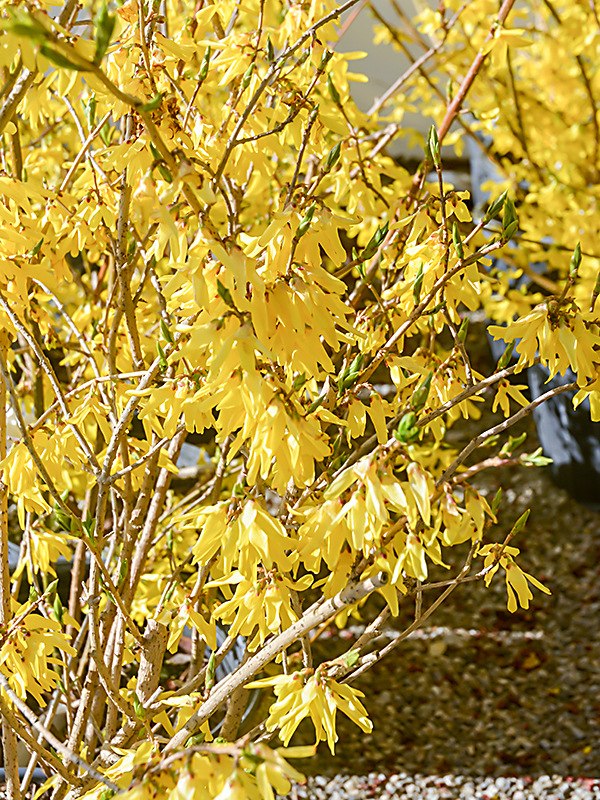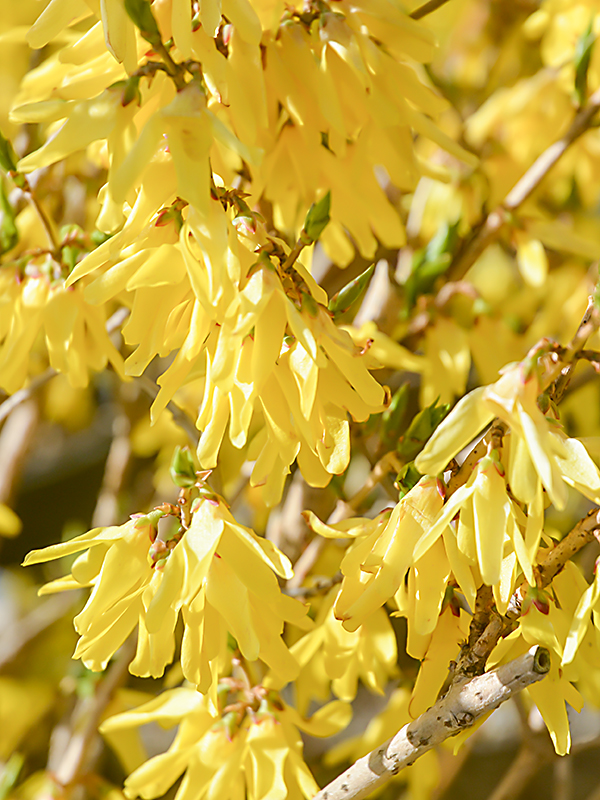
Woody > Forsythia > Forsythia ovata > Forsythia ovata 'Northern Gold'
Forsythia ovata
'Northern Gold'
Northern Gold Early Forsythia, Northern Gold Korean Forsythia
Mike's
Opinion


"
Probably the most common and heavily planted of all the spring-flowering shrubs, it is selected by many amateur gardeners for the explosion of bright yellow flowers that emerge before most other plants. It is also heavily used because of its high tolerance to pollutants and salt. Makes an acceptable border planting when left looking slightly wild; many people keep it neatly pruned, making the shrub look slightly ridiculous. Forsythias are far too common because of the flowering habit, and there are many other more desirable shrubs to alleviate the heavy overplanting, the 'Vomit of Spring'.
Michael Pascoe, NDP., ODH., CLT., MSc. (Plant Conservation)
"
| Family |
| Oleaceae |
| Genus |
| Forsythia |
| Species |
| ovata |
| Cultivar |
| 'Northern Gold' |
| Category |
| Woody |
| Type |
| Shrub (deciduous) |
| Pronunciation |
| USDA Hardiness Zone |
| 4 - 7 |
| Canadian Hardiness Zone |
| 2a - 6b |
| RHS Hardiness Zone |
| H6 - H7 |
| Temperature (°C) |
| -29 |
| Temperature (°F) |
| -20 |
| Height |
| 1.5 - 2.5 m |
| Spread |
| 1.5 -2.5 m |
Photographs
Description and Growing Information
Flowering Period
| General Description |
| One of the earliest flowering shrubs producing a mass of small, bright yellow flowers before leaves emerge. After blooms die, the bright, shiny leaves are somewhat attractive, commonly used as a border planting. |
| Cultivation |
| Prefers well-drained, fertile soil in full sun or light shade. Low tolerance for drought conditions; keep watered in summer. Below freezing temperatures are needed to induce flowering. Prune older wood immediately after flowering to encourage new wood growth; new wood bears more flowers than old. |
| Shape |
| Bushy, wild looking form, stiff and spreading but tighter form than F. x intermedia |
| Growth |
| Fast |
| ID Characteristic |
| Very easily identified when in flower by the mass of bright yellow blooms. After the flowering period it is more bland looking and harder to identify, but a primary clue to identification would be the largely unkempt appearance. |
| Pests |
| Stem gall, dieback and leafspot, but rarely. Usually a very healthy shrub |
| Habitat |
| Horticultural origin. |
| Bark/Stem Description |
| Bark is glabrous and gray-brown, covered in small, dark lenticels. |
| Flower/Leaf Bud Description |
| Buds are conical in shape and approximately 0.5 cm in length. Yellow-brown or greenish colour and often loosely scaled. Flower buds are more cold-hardy then straight species and many other cultivars. |
| Leaf Description |
| Simple, alternate, ovate and abruptly acuminate; either serrate or entire, glabrous and attached with a short, 1 cm petiole. 3.5 - 8.5 cm long, 3 - 6 cm wide. |
| Flower Description |
| Perfect flowers with 4, deeply lobed calyxes and corollas, a deep, golden shade of yellow, 3 cm long and up to 4 cm across; growing on new wood. Slender style with 2-lobed stigma, included stamens inserted at the base of the corolla. |
| Fruit Description |
| Two-celled fruit with dehiscent caps containing many winged seeds. No ornamental value. |
| Colour Description |
| Blooms before leafing so spring colour is pure yellow. Medium to bright green in summer with an unimpressive yellow-green autumn colour. |
| Texture Description |
| Medium texture when in leaf, wild and unkempt winter texture. |
| Notable Specimens |
| The A.M. Cuddy Gardens, Strathroy, Ontario, Canada. |
| Propagation |
| Root softwood cuttings in late spring or early summer; or root semi-ripe cuttings in late summer or winter. Cannot be propagated by seed. |


